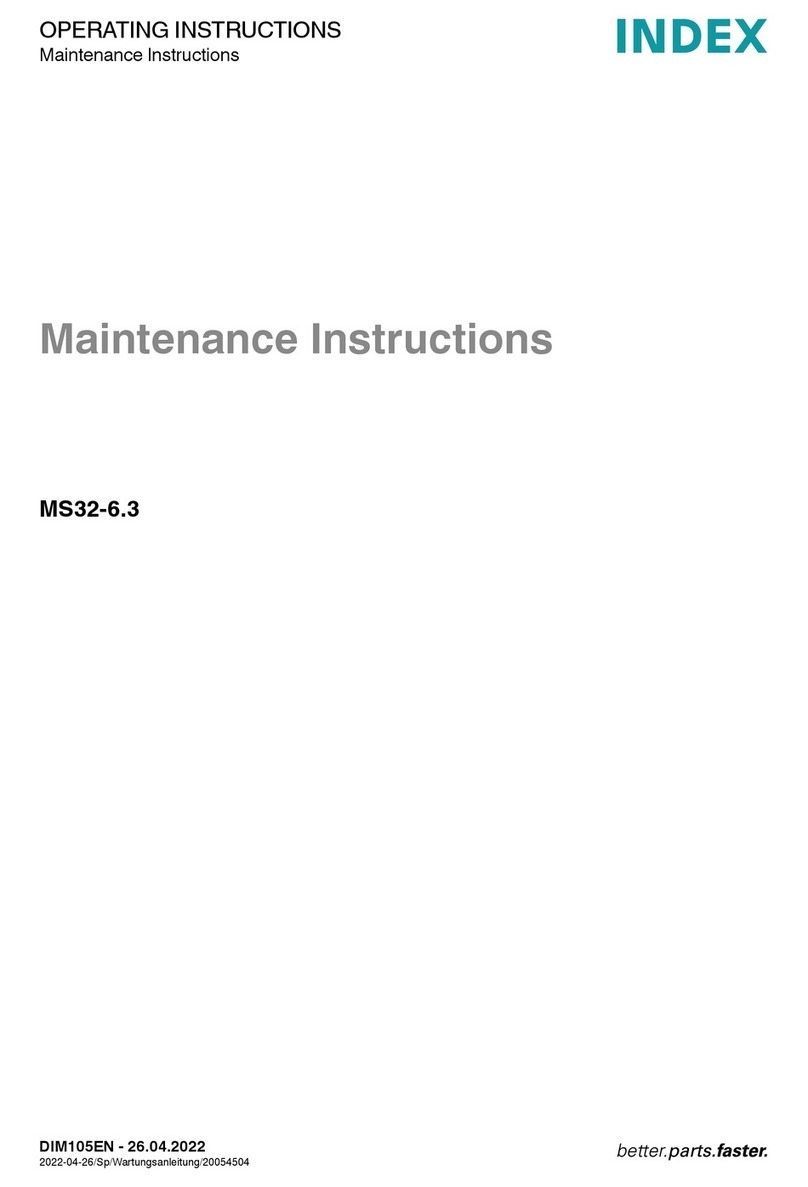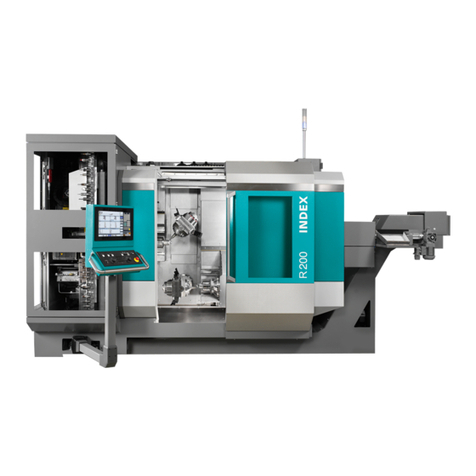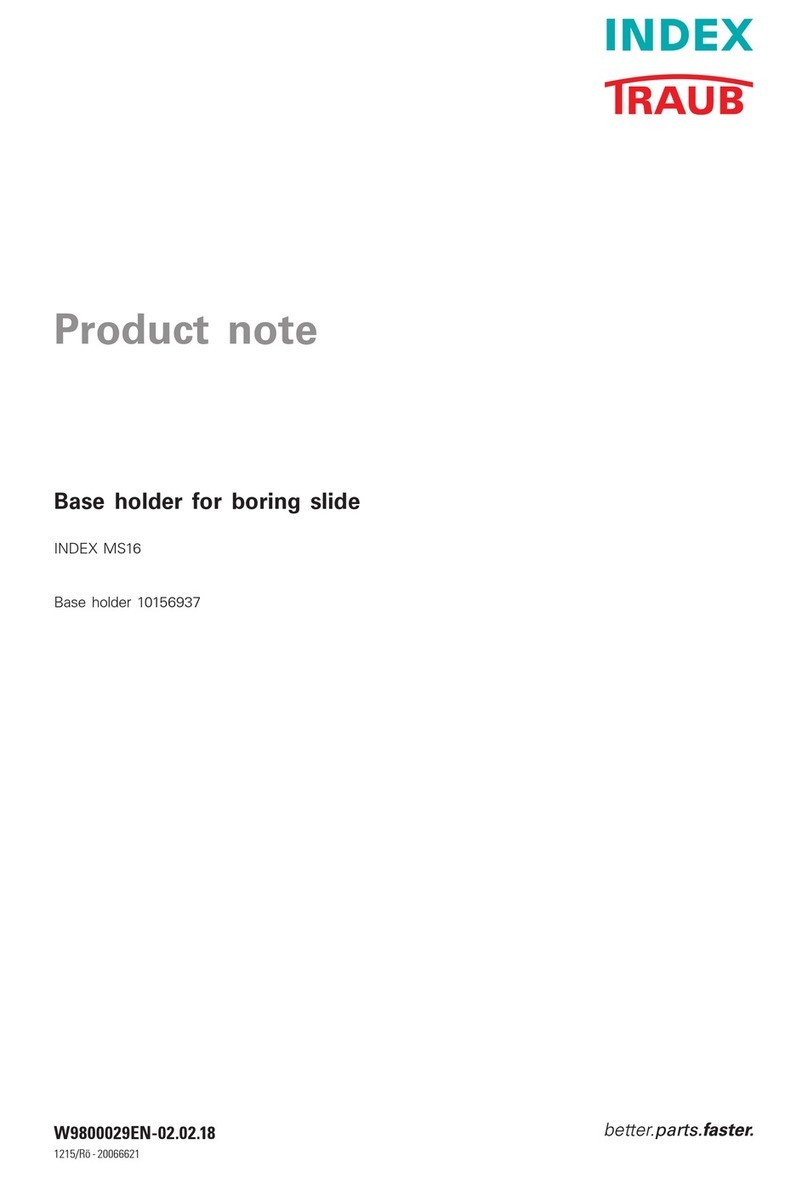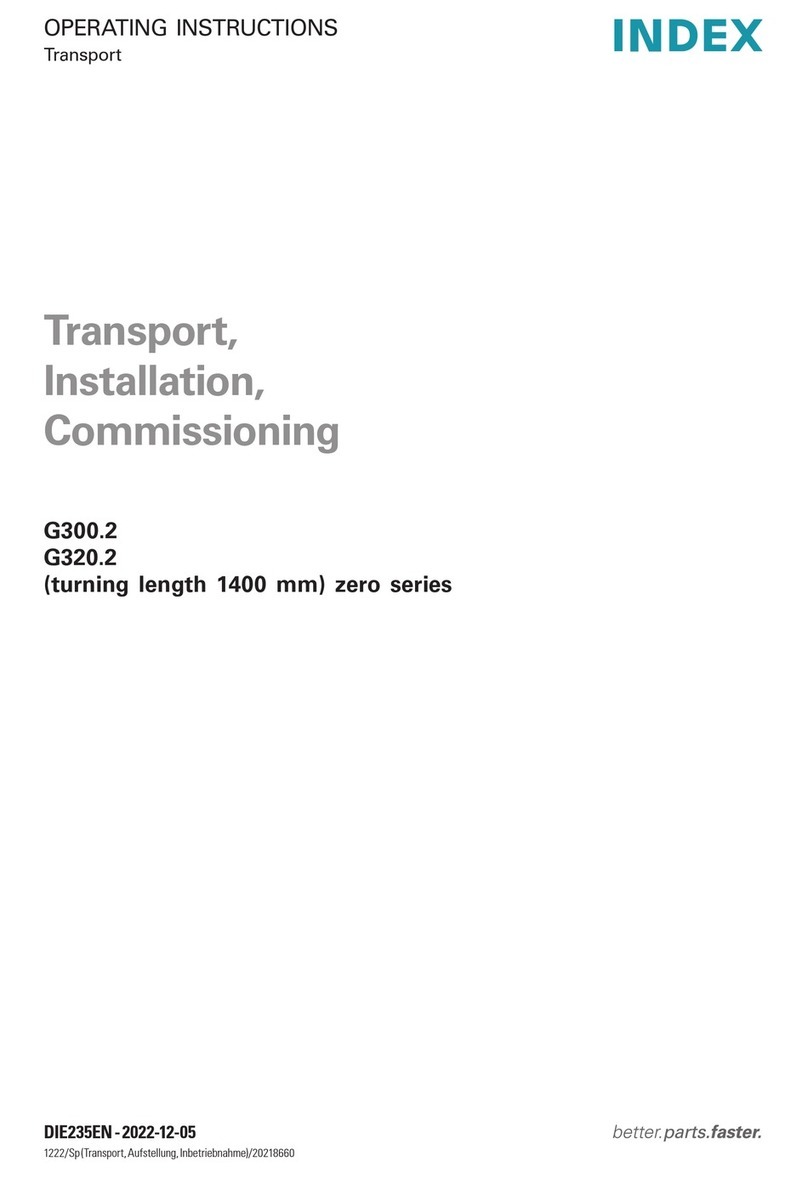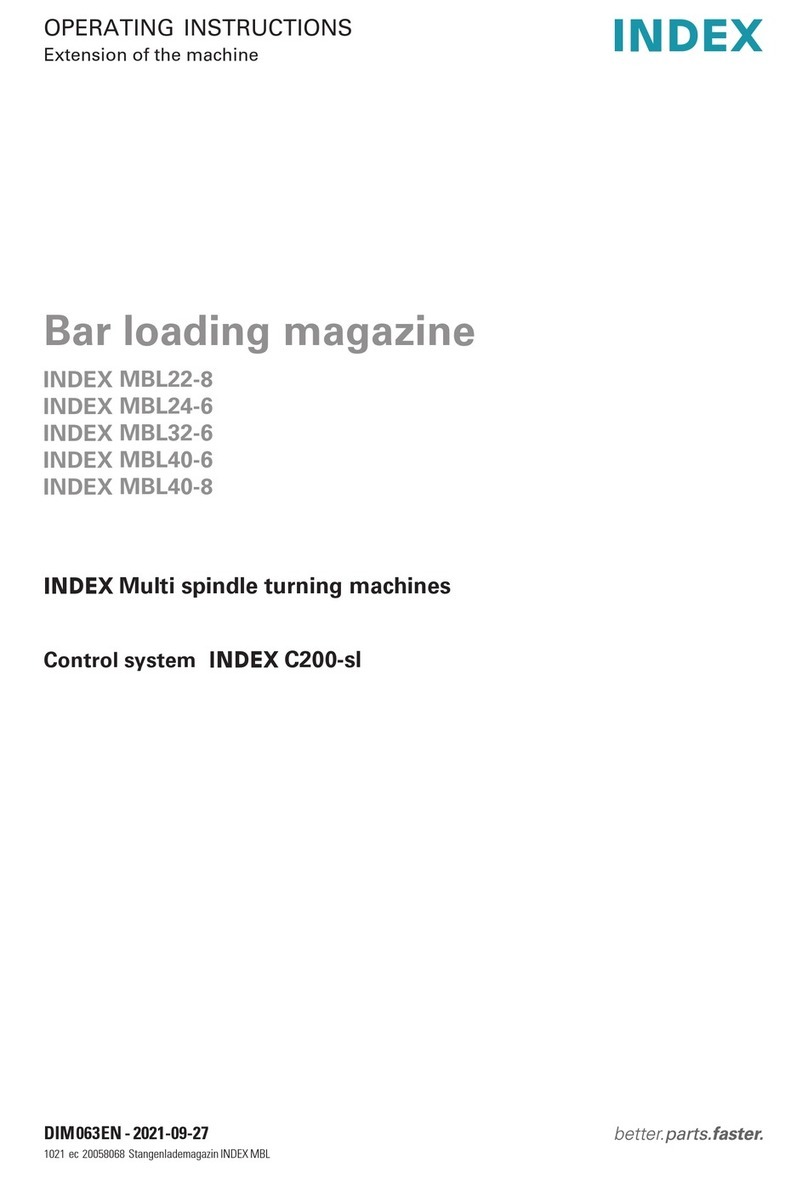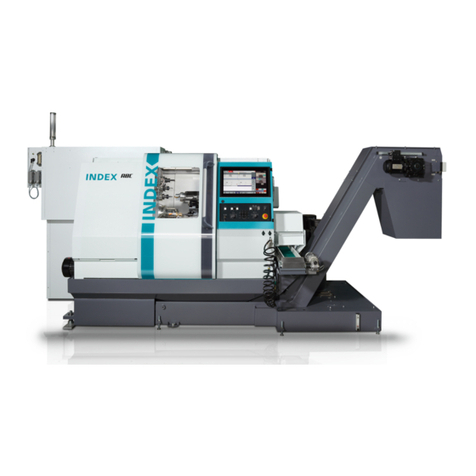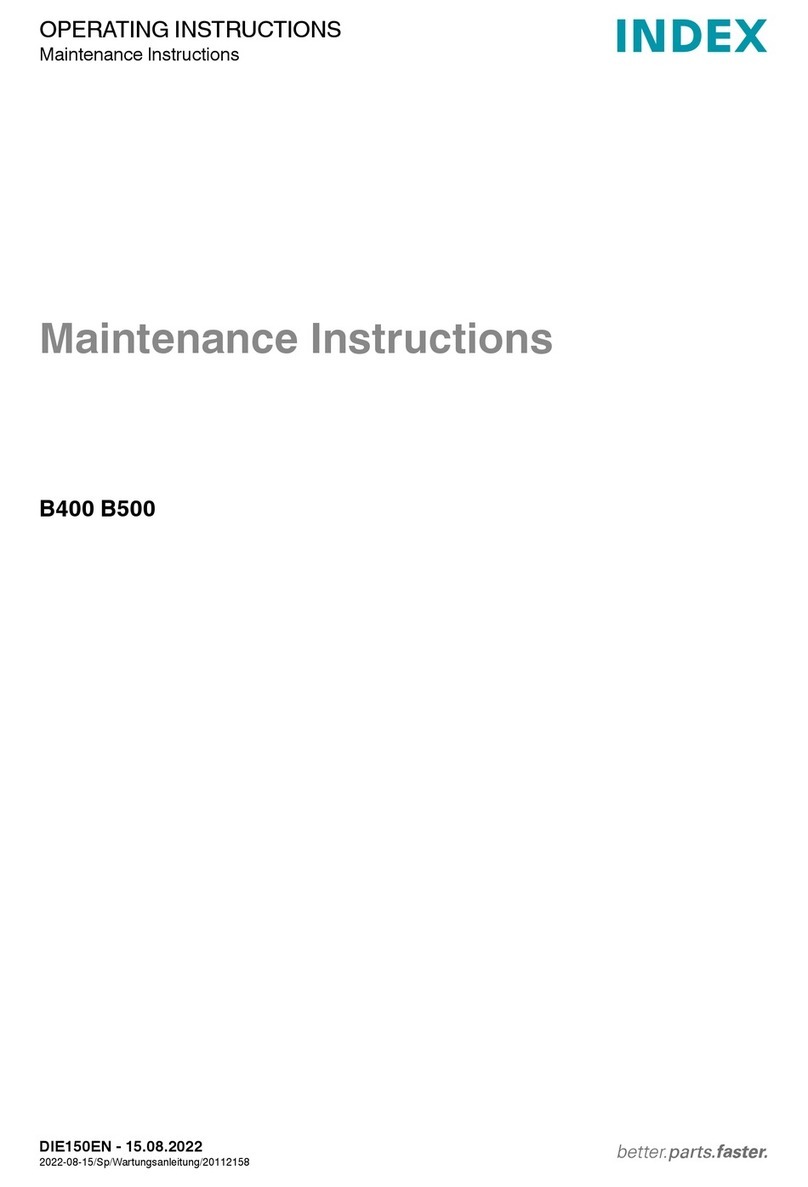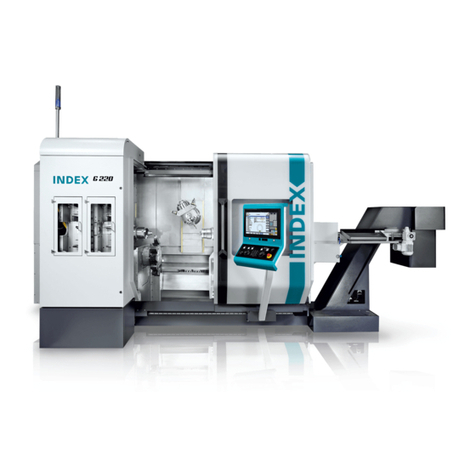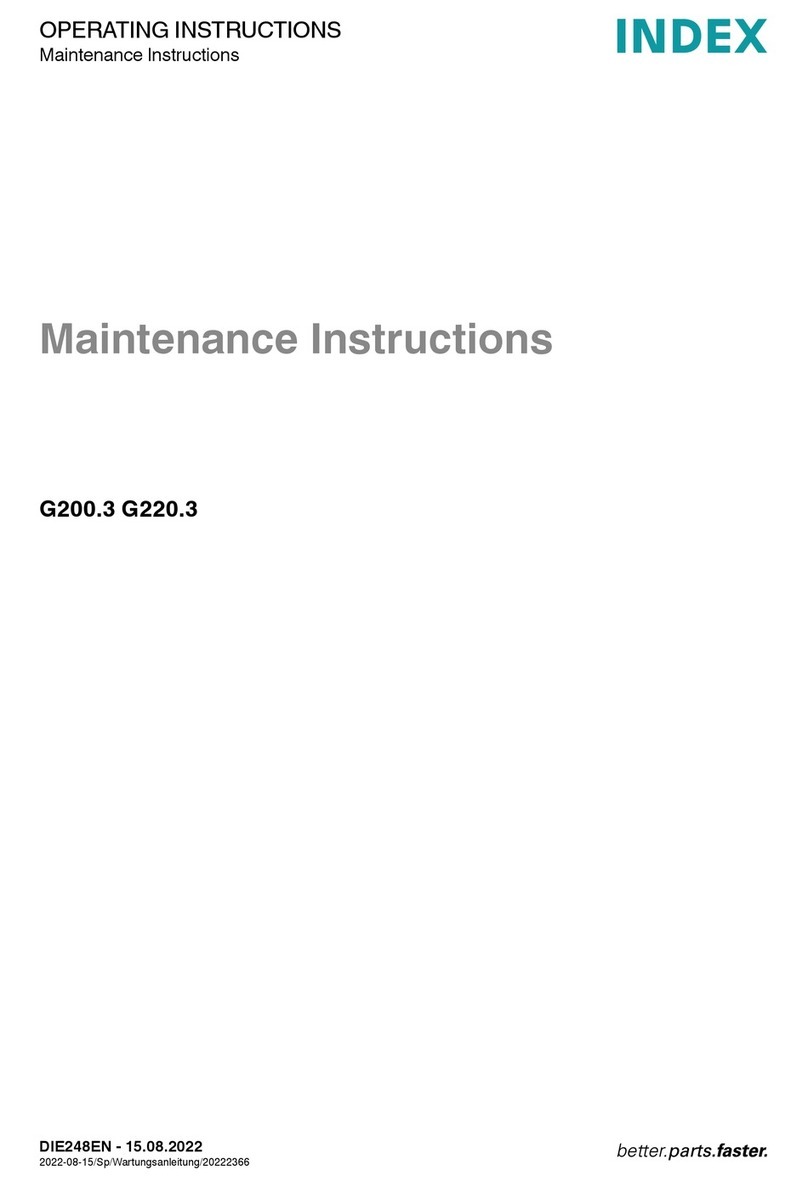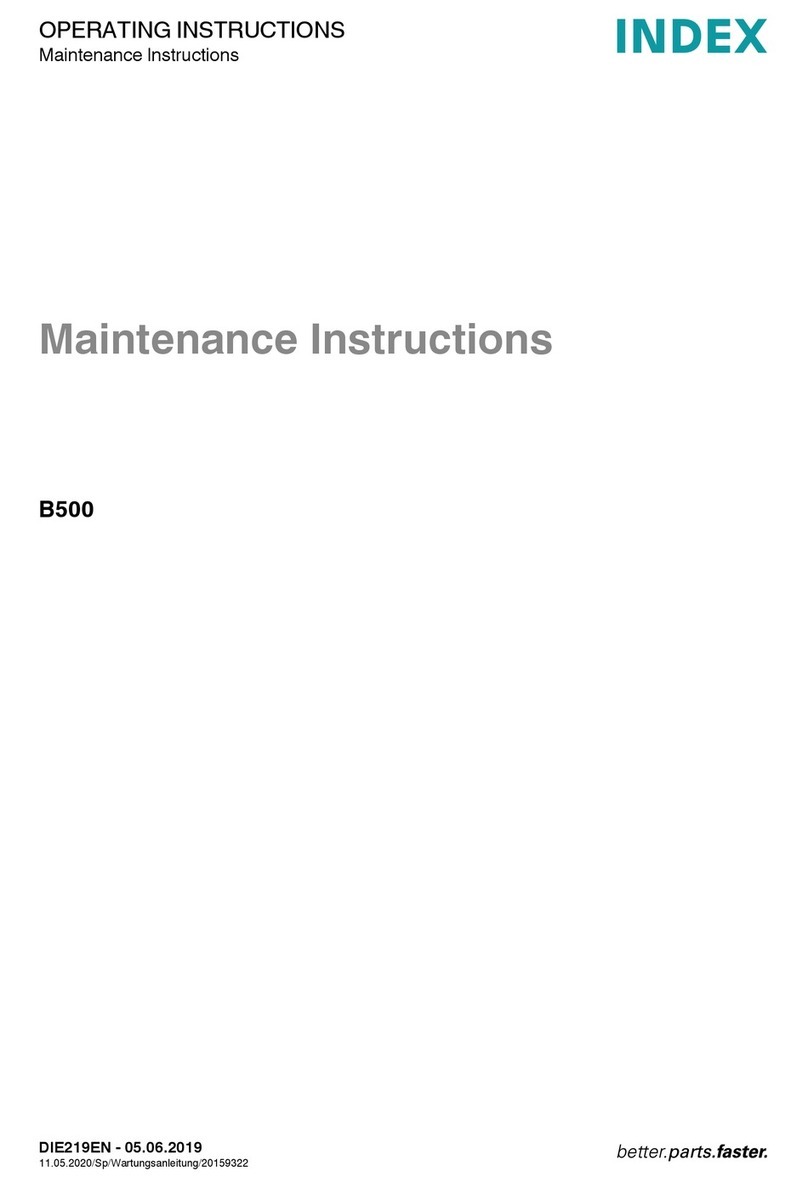
Safety Instructions
Safety Precautions and Technical Details The INDEX TRAUB
user documentation and, in particular, the document “Safety
Precautions and Technical Details” must be observed. The
document is part of the INDEX TRAUB user documentation.
Carrying out maintenance work
Authorized and trained personnel
- Maintenance is to be performed only by authorized and trained
personnel. This applies particularly to work on motors (spindle
motors) or other electrical assemblies. The instructions in the
respective manufacturer documentation must be followed for
such work.
Allow the machine to cool down
- Prior to working on the machine, it must be allowed to cool
down, as hot parts may be located under the covers.
Maintenance work on machine being switched off
- In general, maintenance is to be carried out with the machine
switched off. The main switch must be locked out. Even when
the main switch is switched off, parts of the machine (e.g., the
control cabinet light) may still carry electricity. These parts are
labeled. In a few cases, maintenance work needs to be
performed with the machine turned on (e.g., replacement of
backup batteries). These maintenance activities must be carried
out with special care.
Required tools
- For removing machine parts, suitable lifting gears and a variety
of tools must be used. Removed machine parts must be placed
in a safe position and secured against falling over.
- All maintenance work on the machine must be carried out with
utmost care. Fasteners must be loosened carefully and parts
must be secured against falling down. When elastic items
(springs) are removed/replaced, appropriate devices must be
used. Any (non-horizontal) axes that pose a risk of falling down
must be moved to their end positions or secured against falling
down. Pedal switches must be put aside to avoid inadvertent
actuation.
Performing maintenance, repair or service work
- The currently valid safety regulations, as well as the specific
manufacturer’s information for the intended use must be
observed for these activities.
Use of climbing aids (ladders or steps)
- In addition, appropriate climbing aids may be required to carry
out these activities. When working on climbing aids at great
heights, e.g. on the control cabinet, these must always be
secured or fastened (depending on the machine, eyelets are
also provided for this purpose).
Preface
3
Maintenance Instructions
MS24-6
DIM123EN - 26.04.2022
